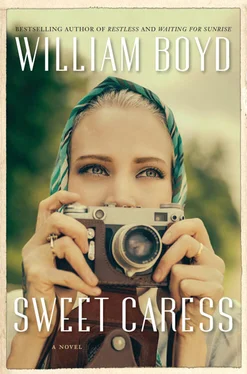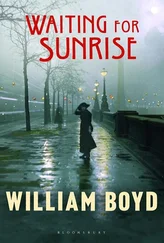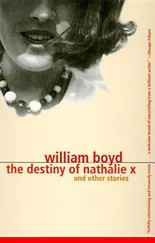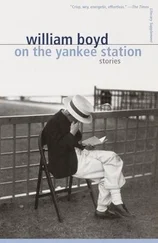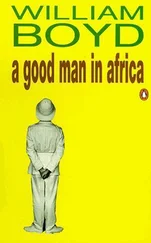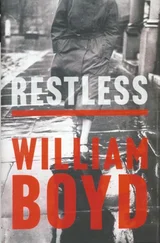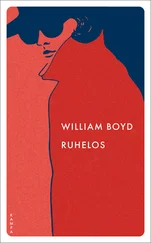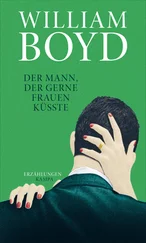Mary Argyll was one of those almost-beautiful women, a not-quite-beautiful woman. But, for Yves-Lucien, that was precisely what made her, paradoxically, more beautiful than anyone he had ever encountered. Beautiful women were boring, he thought; he needed something other than mere perfection to interest him. Her nose was a little too prominent and she should have paid more attention to her hair, which was dark brown and straight, and as a result of this negligence could often look lank and ungroomed.
He loved her body, naked, however. She was so slim that her ribs showed but her breasts were full and generous with small perfectly round nipples. Her feet were a little too large, another imperfection he cherished as it made her seem sometimes graceless and awkward, particularly when she wore her highest heels. Yves-Lucien found this ungainliness un peu loufouque and extremely exciting, sexually. 1
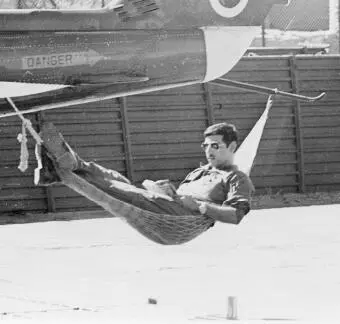
My breakthrough as a photographer in Vietnam has occurred with the publication of this photograph of a Huey pilot waiting for his mission briefing. It made the front cover of three magazines and was syndicated to over forty other magazines and newspapers, worldwide. I have to admit I saw its potential as the image was printed. The suspended man, the shades, the ‘danger’ arrow, the can of beer — all perfect juxtaposition. Once again the photograph stops time (in monochrome); the historical moment, with whatever freight it carries, ideally frozen.
I garnered fees of over $3,000 at the end of the day but, more importantly, it saw my name being bandied about — requests came in for more, similar images — and I have suddenly become aware of the commercial dividend of working in a war zone with the eyes of the world upon you. Your accreditation was extra-valuable, not just because it gave you access, took you places other photographers couldn’t go and made you sometimes a unique witness, but also because all that could be turned into cash. This was (I was learning fast) another edge to the stringers’ hunger for action — there was money to be made for putting yourself in harm’s way.
To my surprise, Lockwood was very excited by the response to my ‘Pilot in his Hammock’ photo. I received a rare Telex from him: more of the same, please, now, now, now. People were growing tired of towering GIs and cowering peasants; Zippo lighters firing thatch; muddied wounded being medevac’d — show us the hidden human face of Vietnam, Lockwood urged. I was way ahead of him.
But encouraged, and finding doors were opening as a result of my new reputation, I resumed my tour of the bases — Long Binh, Bien Hoa, Da Nang — and their backstreets and byways. I even went to visit Oberkamp at Nui Dat and saw the little sandbagged, cinder-block hooch that he called home, now, out on the airport perimeter — but he wouldn’t let me take any photographs of the Australians. ‘The Aussies are mine,’ he said, and he wasn’t joking.
I was in Hong Kong when the Tet Offensive broke out in January 1968. I watched the simultaneous mass assault on some thirty South Vietnam towns and cities as I sat in my room in a hotel — the Royal Neptune — that looked out over Kowloon Bay, seeing the faces of the TV reporters I knew, ducking and wincing, under the roar of incoming fire in Hué, in Khe Sanh, in Saigon itself. They were that close.
I had needed a holiday, a break of some sort, as I’d now been in Vietnam for nearly a year. In the GPW bureau in Hong Kong I could call my family and have a proper conversation — Annie was thinking of doing postgraduate work; Blythe was playing in London pubs in a folk group called Platinum Scrap.
I had a long conversation with Blythe and there was something about the flat tone of her voice that worried me.
‘ Is everything all right, darling?’ I said. ‘Boyfriend trouble? ’
‘ How do you know I’ve got a boyfriend? Did Annie tell you? ’
‘ Educated guess. Is he nice ?’
‘ Tall, blond, talented, wicked. ’
‘ Sounds good to me. Is he nice as well ?’
‘ Only four adjectives, Ma. You know the rules. ’
But she seemed to have brightened up, now she’d told me and we chatted on about her band and the awful pubs they played in.
While I was in Hong Kong I was also able to sort out the financial mechanics of the new success I was enjoying as a result of the prominence of my photographs of young soldiers. I was in almost daily telephonic correspondence with a counter-cultural Californian entrepreneur who wanted to license one of my photos to put on a T-shirt. His name was Moss Fallmaster.
‘ I’m thirty, tall, skinny, I have a beard. I’m pretty sure I’m gay. ’
‘ I don’t quite understand. ’
‘ Of a homosexual persuasion. ’
‘ Oh. Good for you. So’s my uncle. ’
‘ Well, isn’t that wonderful! So, I’m on your side, Amory, I won’t rip you off. If I win, you win. We’ll make a fortune.’ (I never made the fortune that Moss Fallmaster promised me. However, the deal still provides me with a diminishing but still welcome dividend.)
He bought the rights to the photo he was after for $1,000 with a ten per cent royalty for me on every $2 T-shirt he sold. He printed them up with an ambiguous caption that caught the mood of the time: ‘Never Too Young To. . ’
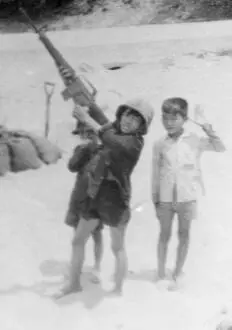
The ‘Never Too Young To. .’ photo.
I had vowed never to go back into combat again but, to our general consternation, after the cataclysm of the Tet Offensive seemed to have died down, so the Mini-Tet arrived in May ’68 — and right on our doorstep. You could stand on the roof terrace of the Caravelle in downtown Saigon watching the gunships strafing the streets of Cholon a mile away.
Mary Poundstone, back in Vietnam, fully accredited to the Observer , said it reminded her of Madrid in 1936 when the Falangist forces were dug in right in the heart of the University district. You left your hotel — the Ritz, by preference — and caught a bus to the front line. Meanwhile, here on the roof of the Caravelle in 1968, we sipped our martinis, smoked our cigarettes, and watched the lambent roseate jewels of tracer arc into the evening sky.
I had Truong drive us into Cholon — Mary came with me, it was her insistence — as close as we dared. Truong would take us down narrow side streets, drop us off and we would creep forward to join whatever unit we could find, US or ARVN. I was very nervous but I could see all Mary’s old war fever return, her passion fired again. Tracer, machine guns, mortars, RPGs — she loved it, perversely; her dander was up.
At one stage, a few days ago, we took shelter in a ruined house during an airstrike. The fetid air in the room seemed to physically shudder from the percussive force of the bombs. We huddled in a corner, backs to a wall.
‘Mary,’ I said, ‘what are we doing here? Are we insane? We’re two old ladies.’
‘We’re not old — we’re wise. We’ve lived, we’re experienced, that’s why we should be here. Not like these potheads running around trying to get their million-dollar wounds. That’s not for us. We see things clearly.’
After that I’ve only been up once again. I’m beginning to feel my luck is running out.
I was in a newish bar in Tu Do Street called Marlon ’n’ Mick’s — perhaps to lure in both rock fans and film buffs. It was always dark and only played American soul music, which was why I patronised it. I was becoming an uncritical admirer of Aretha Franklin.
Читать дальше
